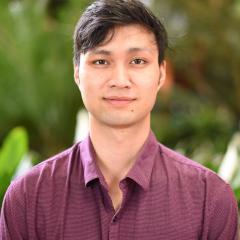Interview with Nima Ghahari
 | Nima Ghahari is a PhD candidate at the Centre for Health Services Research, The University of Queensland. His PhD project focuses on creating a dataset to train AI algorithms for early melanoma detection. Additionally, he is developing a system to identify the areas on each participant's body that are most likely to develop melanoma. His PhD is supervised by Prof Monika Janda, Prof Peter Soyer, Dr. Dilki Jayasinghe , and Dr. Shakes Chandra. |
What experiences or background influenced your decision to pursue a PhD?
I completed my master’s degree in Geographic Information Science (GIS), where my thesis focused on utilizing GIS tools to identify geographical disparities in the age at diagnosis of autism spectrum disorders (ASD). The goal of this study was to identify and target the populations at higher risk of delayed autism diagnoses. Through this research, we notice that many families experiencing a lengthy and frustrating diagnostic process because of doctor’s lack of experience. This made me interested in developing computer-aided systems for disease early disease detection and motivated me to pursue a PhD in this field.
What is the focus of your PhD research?
My PhD research is centred around two main projects. The first project aimed to create a training dataset to enhance existing machine learning algorithms for melanoma detection to improve their accuracy and generalizability. Current algorithms typically evaluate the malignancy of a skin lesion using a single image, whereas clinicians incorporate additional context—such as patient history, comparisons of multiple lesions, and changes over time—to make their decision about lesion’s malignancy. Integrating this contextual information has the potential to significantly improve algorithm performance. To support this advancement, we developed a comprehensive longitudinal skin image dataset that includes contextual details, helping to refine and improve the accuracy of melanoma detection models.
In the second project, we are investigating the relationship between melanoma, naevi attributes, and their spatial distribution. The findings from this study will help to identify body areas in participants that have a higher risk of melanoma development based on their naevi characteristics and distribution.
What has been the most rewarding part of your PhD journey so far?
Although most of our study’s findings have yet to be published, there have been some truly rewarding moments. One highlight was having my poster selected for the People's Choice Award at the ASSC Annual Scientific Meeting. I also take great pride from my contribution to social activities at the centre. Serving as a PhD student representative at the Centre for Health Service Research (South Side) has been a particularly meaningful experience. Additionally, I had the opportunity to chair the student committee at ACEMID, where I facilitated sessions for project discussions and journal clubs. Additionally, I am privileged to serve as the president of the UQ Persian Society, where we host cultural events and foster a supportive community for collaboration and mental well-being. The joy I get from talking to other students and hearing their stories is hard to put into words.
What challenges have you faced during your PhD, and how did you overcome them?
I encountered many challenges, particularly with data cleaning and identifying the most suitable analysis method. What really helped me was to discuss with others when you feel stuck. These conversations not only help you better understand your own problem but also often spark new ideas. Every meeting with my supervisors and every piece of advice I received was invaluable in reorienting myself, shaping my direction, and improving the project.
What skills have you gained during your PhD that you didn’t expect to develop?
In addition to technical skills, I have also developed some valuable general skills. I've learned how to set realistic timelines and deadlines for myself, as well as how to improve my work habits for greater efficiency. Moreover, my involvement in the ACEMID project has also provided me with valuable experience in teamwork and collaboration.
Have you had the opportunity to collaborate with other researchers, locally or internationally?
During the ACEMID student committee, we had the chance to present our project and share the challenges we've encountered. Students from the University of Queensland, Sydney, and Monash each showcased their work, and we identified potential opportunities for collaboration. We've been in contact with individuals whose projects align closely with ours and have also regular meetings and journal clubs to stay in touch with each other.
What’s one piece of advice you’ve received during your PhD that really stuck with you?
When presenting your research, it's essential to consider your audience. If they come from a different background, ensure you explain your project in a clear and accessible way. It's a valuable experience to communicate your message to the public, and the way you describe your project plays a key role in making it relatable and engaging.

![apply now [source: istock]](https://acemid.centre.uq.edu.au/sites/default/files/styles/uq_core_small_square/public/ckfinder/images/iStock-857719502.jpg?itok=c9gXae_D)

